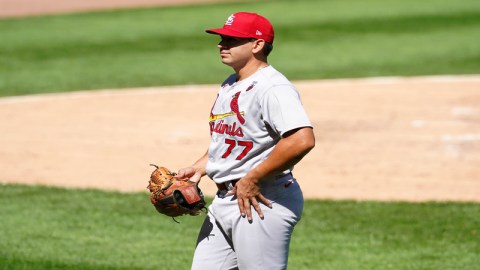Figure skating is the only Olympic event that doesn't end after the performance is over. What happens off the ice can be as dramatic as what happens on it, The New York Times reports.
The reason is the kiss-and-cry room — the area where skaters retreat with their coaches to hear the results, while a camera zooms in on their faces to capture the raw emotion of the reactions.
It can take awkward to a whole new level of discomfort.
Maybe skaters have proven less stoic than fellow Olympians because no other event designates a room for sobbing. No one expects the skaters to "get a grip" after years of training and a mistaken slip in front of millions. Viewers, and especially TV networks, have for years welcomed the "glass case of emotion," which has produced some of the richest, most candid moments of the Games.
The entertainment value of the excitement, crying or sheer shock is important to broadcasters such as NBC. According to the Times, David Michaels, a senior producer for NBC's Olympic coverage and the network's director for figure skating, explains that a lot goes into staging the post-skate production. Event organizers are responsible for designing the kiss-and-cry set. Then the network will adjust the lighting to make it look more realistic and attach a small crane to enter the area from above. This year, Rainer Industries was hired to create the room for $60,000.
"For the skaters, it could be a few minutes of torture," Michaels told the New York Times. "It's good for us. It’s such a big part of our coverage now. It's gone from a blue curtain and a bucket of flowers on the side to plastic ice sculptures and crazy sets. It's become a big design element that everyone works hard to figure out."
The skating drama has progressed since the Olympics were first televised in 1960. In 1980, the area off the ice was backdropped with foliage. In 1984, a designated area with a bench was created for skaters to sit and receive their results. In 1988, a major set was designed and equipped with lights — and probably tissues in anticipation of the emotional spectacle.
For years, we have laughed at the impulsive comments and curses or felt genuine sympathy for the shed tears. We have celebrated the happy hugs and enjoyed the hopeful athletes clutching stuffed animals or flowers thrown onto the rink.
Some skaters are taught how to act in the pressure-filled moment along with learning triple axels and salchow jumps. They are advised to graciously hold their consolation teddy bears and fight to make clenched teeth into a smile.
Several national skating federations even put their skaters through training for the kiss-and-cry, the Times reported. American pairs skater, Mark Ladwig, attended a U.S. Figure Skating training program and participated in a mock kiss-and-cry.
"The videos showed people fidgeting, playing with their mouth, and showed which girls were sitting here like this, very unladylike," Ladwig said as he parted his knees. "For [partner] Amanda [Evora] and I, we make sure that everything is crossed and that we look like proud Team USA members. We're a very technical sport, but we're a sport of aesthetics, too."
While Olympic skaters are masterful performers, everyone can appreciate when they break character in the moments that define their lives and Olympic history. If every skater maintained the vanilla response, the kiss-and-cry scene would no longer be worth capturing, especially at the $60,000 price tag.
According to U.S. Figure Skating figures, the Olympic event is among the top viewed, consistently receiving higher television ratings and more broadcast hours than other Olympic television programming. Without the personal, unscripted zeal or the practiced dramatics reserved for the kiss-and-cry room, skating would not be as amusing.
Thank goodness for those who have let their guard down and allowed viewers to enjoy their genuine emotion such as Evan Lysacek, who wore his emotion on his tear-soaked sleeve after the men’s short program last week, or Nancy Kerrigan, who was disappointed following a poor skate in 1993 and expressed: "I want to die."
Now that's entertainment.



